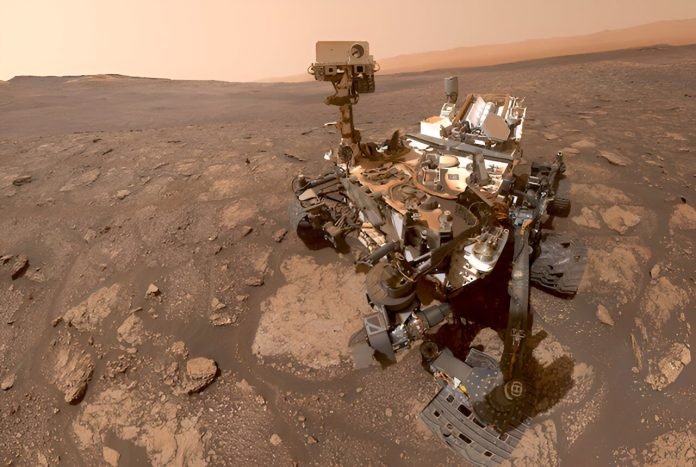
Imagine you’re a detective trying to solve a mystery on Mars.
Your clue? Bursts of methane, a gas that on Earth is mostly made by living things.
Now, a team of scientists, led by John Ortiz, a graduate student at Los Alamos National Laboratory, might have just cracked a part of this Martian puzzle.
Methane is like a big sign that says “Life might be here!”
That’s why NASA’s Curiosity rover, a robot exploring Mars, is so interested in finding it. But there’s a twist: the methane on Mars seems to come and go in a strange way, and understanding these changes could help Curiosity in its search for life.
Published in the Journal of Geophysical Research: Planets, Ortiz’s research suggests that the ups and downs in Mars’s methane levels might be due to changes in the planet’s atmospheric pressure.
This pressure can pull gases, like methane, up from underground into the air.
On Earth, we know a lot about how methane is made and released. But on Mars, it’s a big mystery, especially because scientists think it comes from beneath the surface. The challenge is figuring out when and where this methane shows up in the air.
To solve this, Ortiz and his team turned to powerful computers. They created simulations, like computerized experiments, to see how methane could move through cracks and spaces underground and then get released into the Martian atmosphere.
They also looked at how temperature changes on Mars could affect this process, because how warm or cold it is can change how methane sticks to rocks.
Their findings? Well, they noticed that methane seems to come out just before sunrise on Mars, during the northern summer – a time that just ended on the Red Planet. This matches up with what Curiosity has seen: methane levels going up and down every day and across seasons.
This research is super helpful for Curiosity’s mission. Now, scientists have a better idea of when the rover should be sniffing the air to catch these methane bursts. It’s like knowing the right time to see a shooting star.
Ortiz said, “Our work suggests several key time windows for Curiosity to collect data. We think these offer the best chance of catching these methane changes, and maybe, eventually, figuring out where it comes from on Mars.”
This is exciting stuff because finding out more about Mars’s methane could bring us closer to answering a huge question: Has there ever been life on Mars?
It’s like a space detective story, and thanks to this research, we’re getting closer to solving the mystery.



